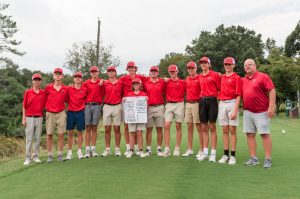Scholarships: get the most bang for your buck
February 15, 2013
College tuition is steadily on the rise, along with expenses such as textbooks, housing, travel, and food. In a recession, paying for college is one of the hardest challenges that young people face, and the average student loan debt for 2011 graduates is $27,000, according to CNN Money. Many high school students, however, just don’t know how to take advantage of all the financial resources available.
“Between the local and national scholarships, the amount of money that students can potentially receive is really unlimited,” said guidance counselor Julie Kirk, who coordinates the scholarship program. “If you look deep enough, there’s something for everyone.”
Indeed there is – between local and national scholarships, college-granted scholarships, and full or partial tuition, last year’s senior class earned a whopping $2,019,240 in scholarships. That figure doesn’t even include the loans and other forms of need-based aid, such as work-study programs, that students received. So, to get you started on your quest for aid, here is a short list of financial resources available. Good luck!
1. National Scholarships, Zinch.com and Fastweb.com: Zinch and Fastweb are online sources for scholarships and student loans. Both require users to fill out specific information about their academic and personal lives to match them with the appropriate scholarships. Zinch is an affiliate of Chegg, which lets college kids buy and sell used textbooks for classes at a fraction of the price from traditional bookstores. It matches you with scholarships from all over the country, and lets you formulate a list of which ones to apply for. Zinch sends you an email when a scholarship deadline is approaching, or when a school is interested in you. The best part? If you win a scholarship that you find on Zinch and send in the documentation, the site will match the scholarship amount to double your money!
Fastweb doesn’t match scholarship funds, but it has a more accurate scholarship matching system. You don’t get repeat information, and you don’t have to sift through hundreds of scholarships to find the ones that you’re actually eligible for — it eliminates them for you. Fastweb also continuously searches for new scholarship matches, and it will send an email every time a new match comes up, listing the deadline and scholarship amount. And remember, transcript requests for scholarships, whether local or national, are absolutely free.
3. The FAFSA – Many students don’t know much about the Federal Application for Student Aid, but it allows applicants to be considered for all types of federal, state, and college-specific loans, grants, internships, programs, and need-based scholarships. The FAFSA asks students to input family income and tax information to determine individual levels of need, automatically qualifying students for low-interest loans, work-study programs, and other types of aid. Even if you don’t qualify for any of the federal or state aid, colleges look at the FAFSA to determine the amount of money that they will give you in grants or scholarships.
4. Fauquier High School Scholarships – Guidance frequently announces scholarship deadlines and reminders in the mornings and afternoons. You won’t find these scholarships anywhere online, except on guidance’s tab on the FHS website.
“The scholarship list is posted on the guidance website and nobody looks at it,” Kirk said. “Students should check it weekly because it’s updated all the time. We have around 40 right now, but we should hit 80 by the end of it all.”
Guidance counselors are there to answer questions about each scholarship, help you with the application, and give you information about where to turn it in and when to submit it. Many scholarships go unclaimed each year because students don’t apply for them.
“Some scholarships are for people on specific teams but no one applies,” Kirk said. “And that either keeps committees from giving the scholarship at all, or they choose someone from a different high school in the county. We don’t want Kettle Run or Liberty getting our money!”
Most of the scholarships offered through guidance are local, and many are specific to sports teams, trade and technical students, or academic achievers in Fauquier County. The lowest scholarship is around $250, while the highest is around $4000 or $5000. As an added bonus, students applying for local scholarships do not need to fill out a transcript request at all – guidance automatically submits one along with your application.
“I just hope that everybody applies,” said Kirk.






